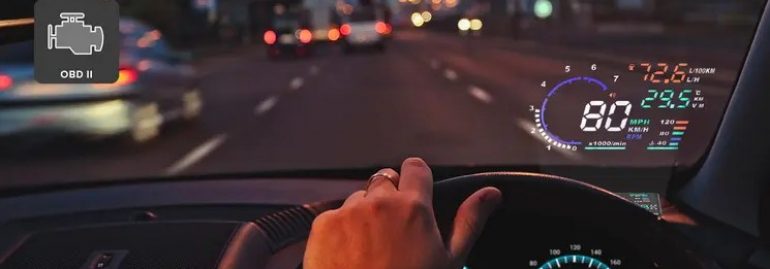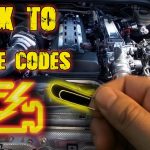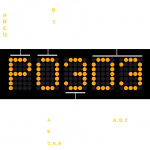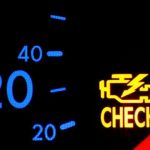
When your car gives you the check engine light, it may indicate that something is wrong with your vehicle. You can read obd1 codes by using a diagnostic connector located in the engine compartment by the fender, near the battery. You can also use a 12 volt test light and a 4-inch gauge 16 jumper wire to read the codes on your own. If you don’t have one of these devices, you can always purchase a tester and check the vehicle yourself.
Diagnostic trouble codes
In order to properly diagnose a problem, you need to know what your car’s diagnostic trouble codes are. These codes are a starting point, but they do not reveal the exact cause of the problem. Parts are often replaced until it is clear that the code does not mean a part is bad. A temporary problem can also cause a code, such as a loose fuel cap or poor connection. Sometimes moisture can affect sensor readings. Understanding how to interpret the diagnostic trouble codes can be extremely helpful to you, even for simple fixes.
OBD codes are divided into three categories. General codes are those that apply to all cars, while manufacturer-specific codes are specific to certain models. The codes begin with a digit, and the first digit tells you whether the code is generic or manufacturer-specific. A generic code will be used when there is no specific manufacturer-specific code. For example, a code starting with a 0 is a generic code, while a manufacturer-specific code will indicate a specific problem.
The diagnostic trouble codes for OBD1 are not universal, and your specific car’s specific code may not apply. If you’re unfamiliar with this technology, you may need to hire a mechanic to check the codes in your car. Most auto repair shops offer free diagnostics scanning, so you don’t need to spend a lot of money on expensive services. If you’re unable to locate a professional, you can use an online service.
A diagnostic trouble code is a digit that can be stored in a vehicle’s on-board computer. In addition to identifying problems, these codes also explain how a particular component or process is affected. The codes also allow you to pinpoint the source of the problem, which is a helpful tool to have on hand. A diagnostic tool is essential for a proper diagnosis of a problem. The DG Technologies diagnostic tool is designed to pull fault codes from the vehicle’s network.
Meaning of obd 1 codes
Understanding the meaning of OBD1 codes can save you from a costly repair bill. These codes are composed of letters and numbers that identify the general cause of the Check Engine Light. A typical OBD1 code contains single numbers from 0 to 3, four-digit number sequences from 00 to 99, and a short pause. Typically, a car that shows these codes can be repaired by repairing the underlying problem.
The first thing to know about OBD codes is that they are categorized by the manufacturer of the car. The codes that appear are for cars that are OBD2 compliant, generally those manufactured after 1996. These codes are used to self-diagnose problems in cars and help mechanics repair them. These codes may include a troublesome code that indicates a serious problem or a malfunction. Once you know the general meaning of an OBD code, you can fix the problem on your own or bring it to a certified mechanic.
The second thing to know about OBD1 codes is that they refer to problems with the vehicle’s engine and electrical system. Most cars have OBD1 connectors, and you can diagnose them yourself without any special tools. You can use a paperclip to check for an ODB1 code and determine the issue yourself. If you don’t have a car diagnostic tool, you can use a 12 volt test light to read an ODB1 code.
A car’s diagnosis begins with the diagnosis of the trouble codes. When an error code occurs, it signals a malfunction. The P0201 code, for example, indicates that something is wrong with the cylinder 1 injector circuit. If the problem persists, you should take your car to a repair shop. A mechanic can use this information to identify the problem and repair the car. This code will also tell you if you have any other problems with the vehicle.
How to read them
In order to figure out how to read OBD codes, you first need to know what they are. Basically, an OBD code is a series of flashes that indicates a malfunction in the vehicle. These flashes may be caused by a number of things. To find out more about what an OBD code means, visit one of the many websites that interpret OBD codes. If you can’t find one of these websites, you can search online for help.
To read OBD1 codes, you’ll need to know the vehicle’s model. A good way to do this is to look for a diagnostic connector located in the engine compartment near the battery. You can then use a gauge 16 jumper wire and a test light to read the codes. A voltmeter can also be used. This method works on newer vehicles. It’s also the easiest way to check if you’re having any problems.
After you’ve installed your OBD scanner on your computer, you’ll need to enter the vehicle’s identification number into the OBD scanner. Once this is done, you can see the OBD codes. If the first character is the same as the second, you’ll want to interpret it as a faulty part. If you have to look for codes for multiple models, try referring to the manual of the car.
Symptoms of obd 1 codes
In order to determine what problems are causing your vehicle to produce these codes, you will need to know exactly which system is faulty. There are two main categories: EVAP codes and transmission codes. EVAP is a system that monitors exhaust gas emissions from the vehicle and is crucial in keeping air pollution to a minimum. Transmission codes, on the other hand, are related to the vehicle’s transmission system, and can be triggered by problems with the speed sensor or computer system.
Using a diagnostic tool can help you determine the cause of your vehicle’s code problem and save you time and money. To read the codes on your vehicle, you will need to plug in your car’s check engine light to your car’s diagnostic connector. A diagnostic tool is typically available at a local auto parts store. A diagnostic tool that reads the codes is necessary for the diagnostic process. To read your obd1 codes, you will need to connect your vehicle to a diagnostic tool and read the codes.
If your car’s code is a P0171 or P0174, the issue is with the fuel supply. The engine is receiving too much air or too little fuel. You may experience a Check Engine Light and a hesitant start. You may have disconnected hoses or a bad fuel pressure regulator. A faulty fuel pressure regulator is one of the most common causes of this code. Ultimately, the problem is with the air/fuel ratio, and you’ll need to get your vehicle checked to get rid of it.
How to reset obd1 codes
If you’ve ever wondered how to reset OBD1 codes on your car, there are a few simple steps you can take to do so. Before you begin, make sure you disconnect the battery terminals from the car. Your car’s ECU controls every electronic gadget and system in the vehicle, including its factory alarm and theft deterrent radio system. By disabling power to the car’s ECU, you can reset everything from the radio to the power seats and clock to transmission shift points.
First, turn off your car. Next, disconnect the battery from the damaged terminal. Hold the battery disconnected for about a minute to clear the codes. Then, reinsert the battery and the vehicle should reboot. Once this is done, you’ll see that the codes have been cleared and that your car is running normally. If this doesn’t fix the problem, try removing and reinserting the battery.
To reset the check engine light, you can try two methods. One method is to disconnect the battery and then restart the vehicle. This will clear the codes on your car’s ECU and will reset the check engine light. This method is not recommended for every vehicle. Be careful to make sure that you do not disconnect the battery while disabling the OBD1 connector. If you disengage the battery, the radio presets may be lost. If you’re using a DIY solution, you can also use a professional diagnostic tool.
The next step is to connect the OBD2 scanner to the car. This port is located under the dashboard, often near the steering wheel. Once the car has been turned off, connect the OBD2 scanner to the vehicle and wait a few seconds for the device to scan for codes. It will then display a single code or a list of codes. Once all the codes have been cleared, the car will run normally and you’ll be able to drive.







Thanks for your help. I want to know if i can get a converter cable that plugs into my ODB1 truck and the other end of the converter plug. Is an ODB2 connector can I plug it into my truck and use my ODB2 scanner that can plug into the other end of the converter ? Or do I need a different scanner too?
This article provided helpful guidance on how I can read OBD1 codes from my own vehicle. It explained that I’ll need to locate the diagnostic connector and can use a jumper wire and test light to view the codes. It also covered the meaning of OBD1 codes and some common symptoms I might experience if my vehicle is producing certain codes.